Agriculture: Change Farming to Adapt to Climate Change
11 minute read
Updated on: 08 May 2021
Food production is threatened by climate change . Our farming system is heavily reliant on our physical environment and, while farmers are used to climatic variability
, many are already reporting difficulties due to unpredictable weather and seasonal patterns
. In turn, these climatic shifts then alter the severity and distribution of weeds and crop diseases
. To further increase the pressure on our food production systems, the human population is expected to exceed 9.7 billion by 2050
(See ‘The Problem with Agriculture’ Chapter, in our Food and Farming Course!). This is a clear indication that we need to act fast.

Why agriculture needs to adapt to a changing climate
Without adaptation, climate change could reduce global crop yields by as much as 5-30% by 2050 . On the other hand, farmers who adapt by changing planting times, crop varieties, and managing water supplies could increase yields by 7-15% compared to present production rates
. However, it is important to keep in mind that, as the planet continues to warm (between 1 to 2°C in temperate regions and 1.5 to 3°C in tropical regions
), adaptation becomes more difficult and creates fewer benefits
.
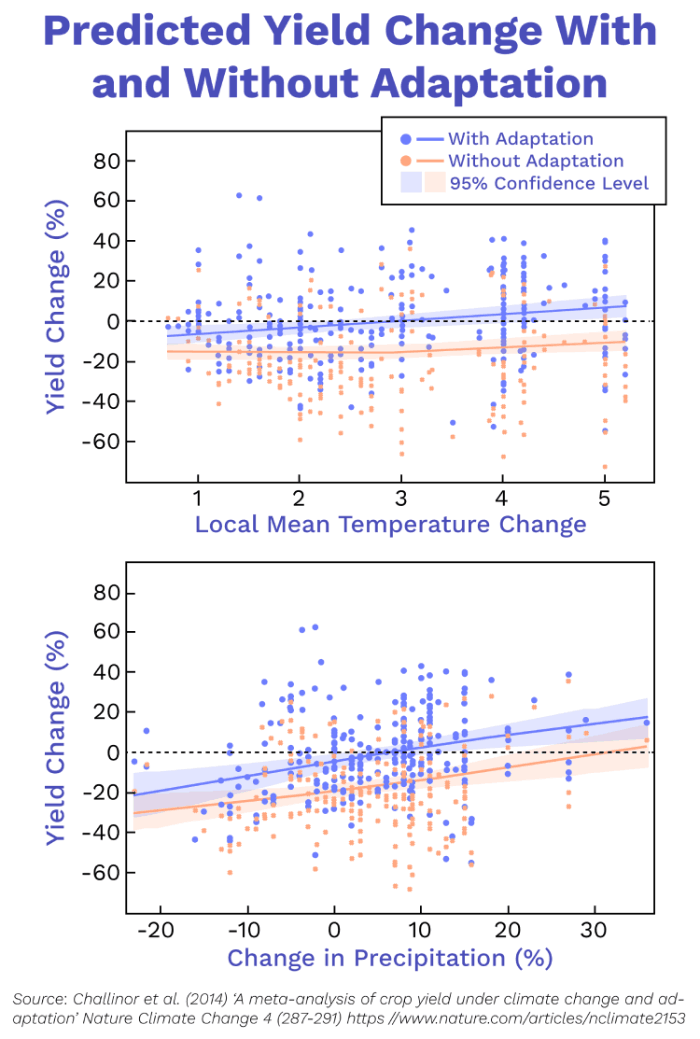
Predicted yield change with and without adaptation
What might adaptation look like?
Across the world, farming can look very different - from harvesting cranberries on wetland bogs to producing milk from camels . This means there is a huge variety of ways farmers can adapt
. Even simple changes can make a difference
. For example, French vineyards now harvest their grapes 30 days earlier than they did 50 years ago
and 41% of European winegrowers are willing to grow new varieties of grape to suit the climate
.
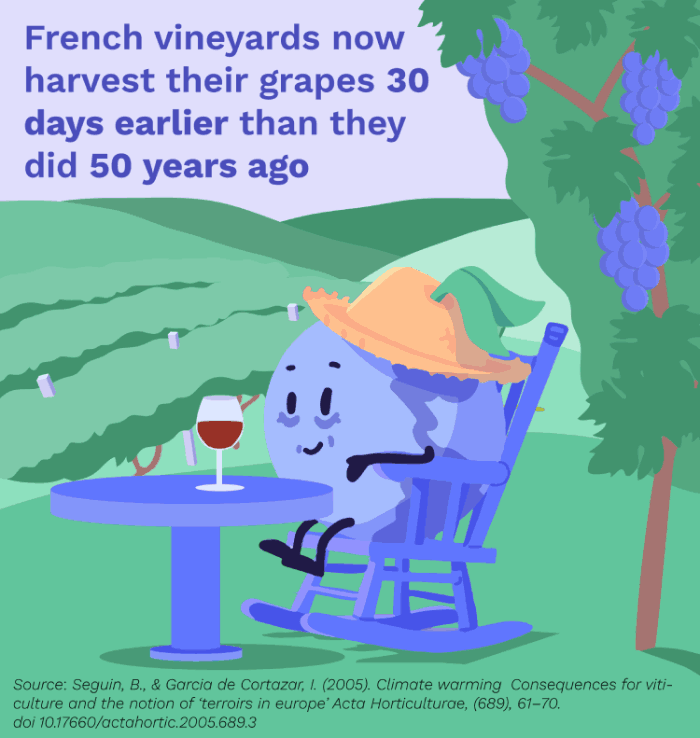
Harvest times are changing due to climate change
Agricultural adaptation can also involve much bigger changes that affect how the farm is run - from switching to sustainable land management methods to buying insurance for crops
. Big or small, these adaptive choices help make the farm more resilient to change, be that climate-related or not
.
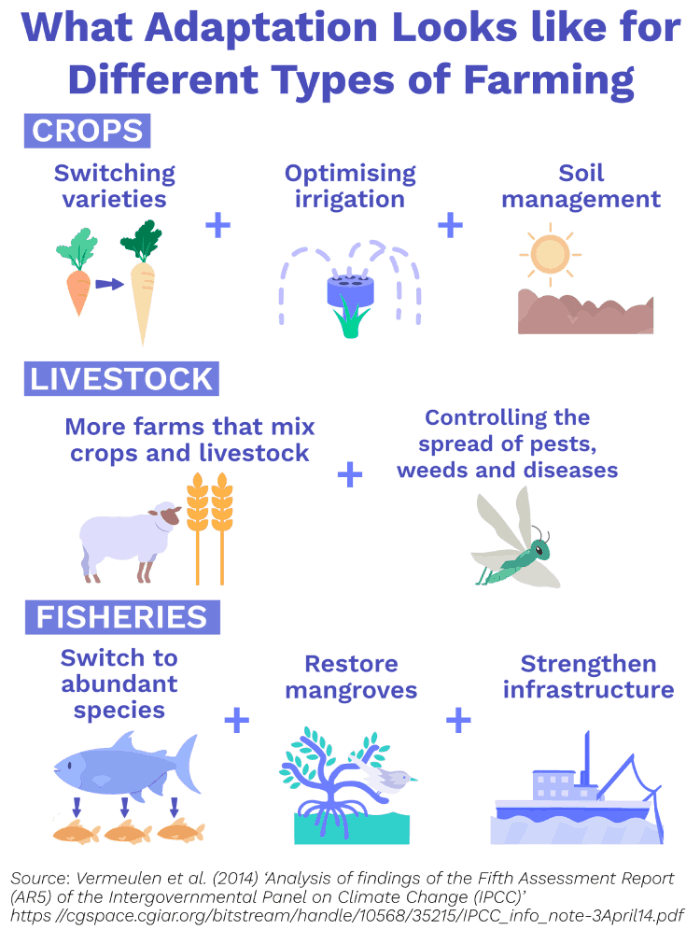
What adaptation looks like for different types of farming
When should we start?
For as long as humans have farmed, adaptation has been a way of life. Adaptation involves responding to all sorts of environmental and social changes . When it comes to climate change, we can use a similar approach by trialing solutions now and developing them as we learn
. However, in places like sub-Saharan Africa, farming systems are predicted to cross tipping points in the next 5-20 years
. Tipping points represent thresholds which, when crossed, result in abrupt and rapid changes in environmental conditions
. If we are to avoid these points of no return, we will likely need more immediate and transformative change
.
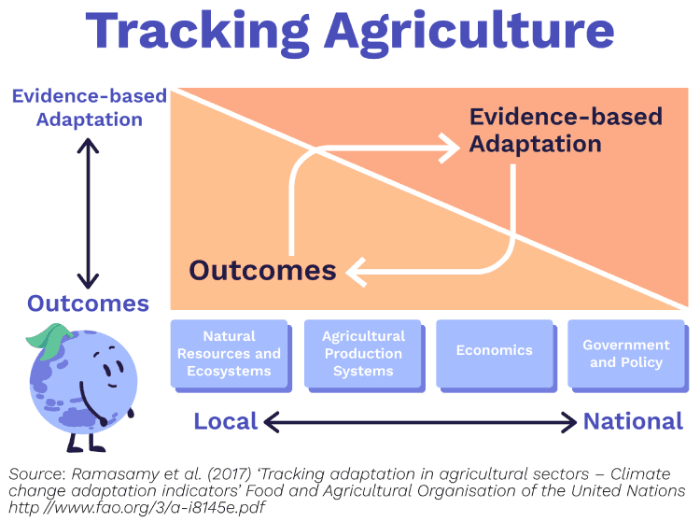
Tracking Adaptation
What are the barriers to adaptation?
The most obvious barrier to adaptation is the cost. The United Nations estimates that, by 2030, it will cost $11.3 to 12.6 billion to adapt agriculture (including forestry and fisheries) to climate change . Some scientists believe this figure could be 2 to 3 times higher
!
There are other challenges too, including a lack of public awareness , competition over land use between industries
, and what technology is available to help farmers adapt
.
How do we encourage adaptation?
1. Mad scientists or fruitful research?
There is a whole field of science dedicated to improving agricultural practices, reducing the environmental impact of farming, and making sure there is enough food for everyone. If we want to make these goals a reality, we need to fund this science . Indeed, for every US dollar invested in research on agricultural adaptation, developing regions could gain $3.7 to $5.2 back in the long-run
.
Genetically Engineered (GE) crops are a brilliant example of how agricultural research can help us adapt to climate change .
GE technology has produced crops that can withstand higher temperatures, water scarcity and disease outbreaks . As well as introducing these new varieties, genetic engineering can increase the genetic diversity of a species by introducing new variants of specific genes
.
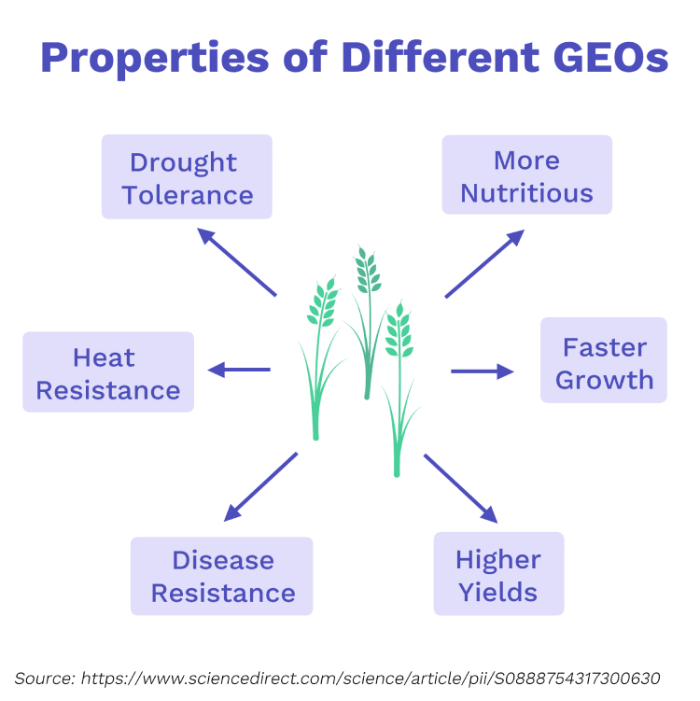
GEOs can have many different properties
Data-driven research also offers promising solutions – from developing fine-tuned weather forecasts to more detailed soil maps – all of which use more accurate, real-time information to help farmers decide how best to adapt. This research is really helpful as the more information we have to make decisions, the more likely we are to make the right adaptive choices
.
2. Governance and policy
Government action is part of what’s called a ‘top-down’ approach . While communities and businesses can push for change, when it comes to adaptation, governments are still in the driving seat
. This is because they create laws and policies which, in turn, make it easier (or harder) for farmers to adapt.
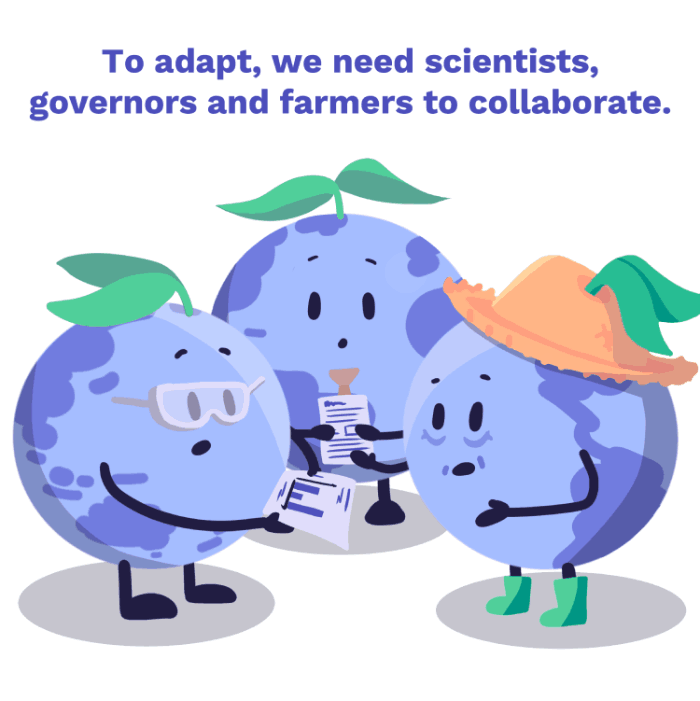
A collaborative approach will be needed to properly adapt
Governments are also important when it comes to funding agriculture. Between 2014-16, governments gave a total of $568 billion per year to the agricultural sector . Now, more than ever, this financial support must factor in the costs of adapting the way we farm.
So, which specific policies could help? Since the 1990s, there has been a focus on schemes where governments pay land managers to improve the health of their local ecosystems . Case studies show that clearly defining the environmental outcomes of these schemes (e.g. better water quality, higher biodiversity) reduces their likelihood of failure. Where successful, these types of policies help farmers to become more resilient to climate change
.
3. Economics
Government schemes are not the only way we can finance climate change adaptation: other organisations, including banks and private companies, are also finding ways to help people adapt.
The Africa Disaster Risk Financing Programme does this by identifying climate risks and working to minimise the financial losses of natural disasters . This partly works through an insurance scheme that compensates farmers in the event of a climate-related disaster
. Aside from opting into similar schemes, farmers can also adapt by finding new ways to earn money outside of traditional agriculture
. Potential options include tourism or hosting renewable energy projects
.
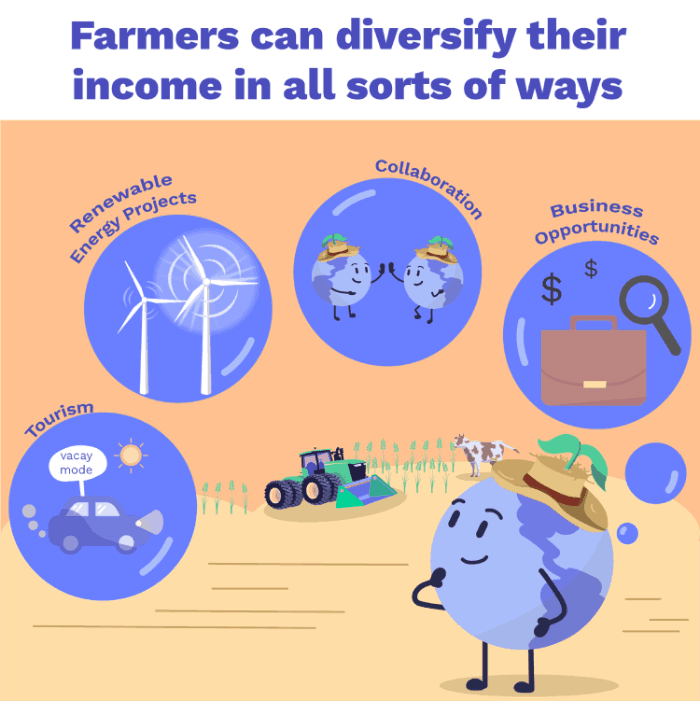
Diversification is also a possible adaptation strategy for farmers
4. Sharing best practice - tell your friends!
At an individual level, many farmers are facing climate issues head-on via a ‘grassroots’ approach to adaptation . This works through networking, where neighbouring farmers share solutions and learn from each other
.
In New Zealand, ‘role-model’ farmers help influence others to adapt ; in Niger, farmer-led reforestation has resulted in 10 times more tree cover (to combat the effects of flash floods) plus improved yields and soil fertility
.
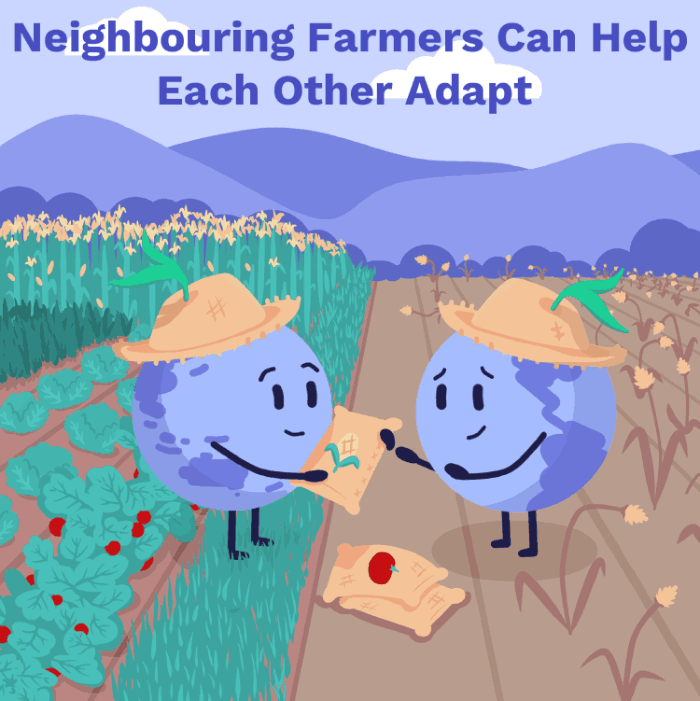
Friendly farmers are crucial to adapt agriculture
The next step is sharing these ideas with researchers and organisations at national and international levels to ensure that farmers are part of the decision-making processes which affect their land and livelihoods .
Some groups - namely women, youth and indigenous people - are disproportionately affected when environments are mismanaged . To counteract this, studies show that including these groups in decision-making can lead to better outcomes for both people and the planet
. For example, deforestation in the Amazon is 2 to 3 times lower in areas where indigenous people have legal rights to their land
. We can therefore adapt by legally recognising indigenous rights
and using indigenous knowledge to cope with climate change and the threat to future food security
. Outside of these communities, equipping more women with better training and tools could increase agricultural yields in developing countries by 2.5-4%, enough to feed over 100 million people
!
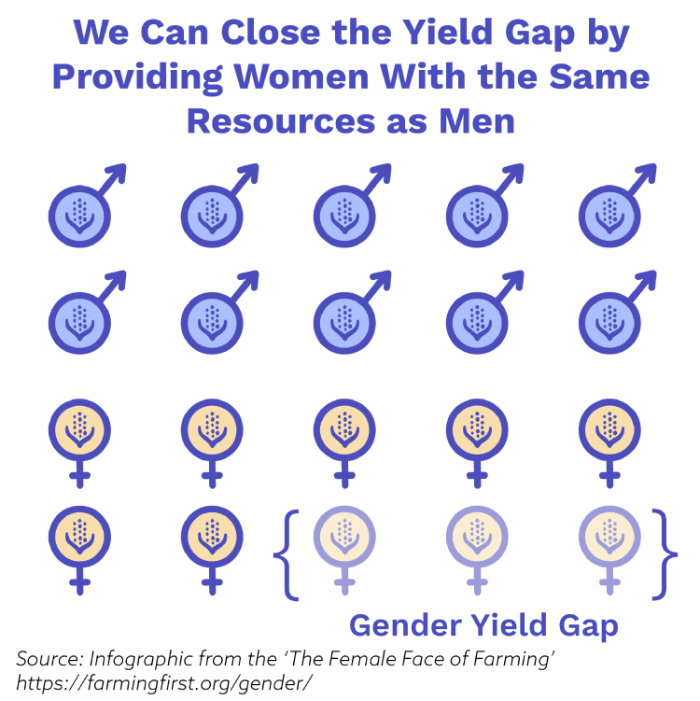
The Gender Yield Gap
What now?
We have learnt that we need people, technology, and research to help us adapt the way we farm. As well as action from governments and international banks , we must make sure that farmers have a say in how we produce food, now and in the future. By combining scientific research and local farming techniques we can better understand how to support a smooth transition to climate-resilient farming
.